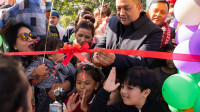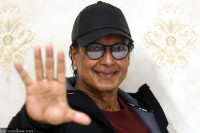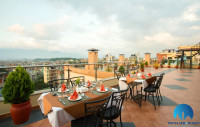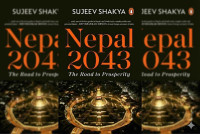Culture & Lifestyle
How do you make art?
One necessarily need not be an artist to create art.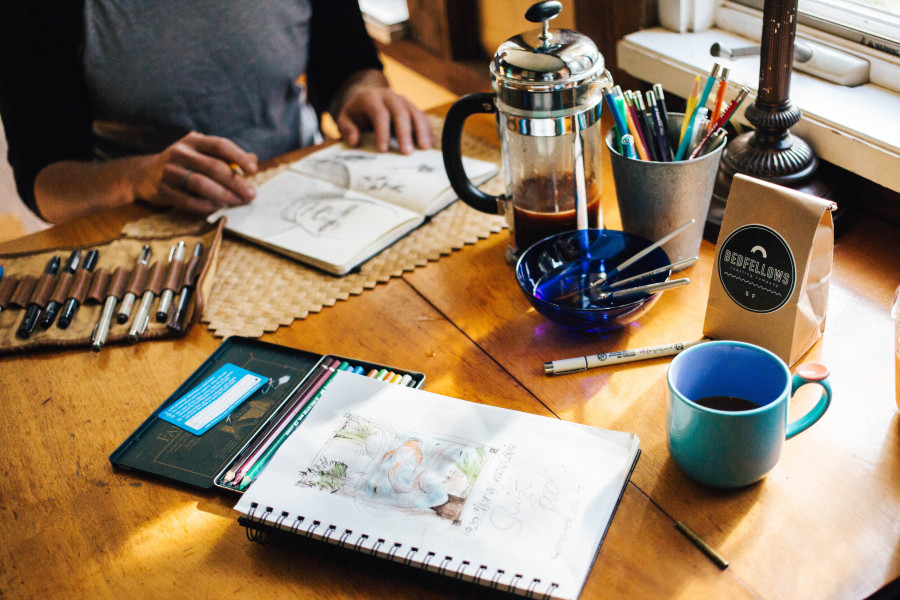
Shuvangi Khadka
On knowing that he was giving a ride to an artist, the rider asked Bharat Rai “Who is the best artist?” Reminiscing that encounter, Rai says, “It is like asking how much a pinch can hurt.”
Months ago, I remember meeting him on the terrace of a restaurant whose walls were adorned with his work for a day. The texture of rust corrosion on his artwork expressed his mental state. He had been sitting there scribbling, away from the crowd, when his name was announced on the stage.
He continues, “Sometimes I think I am not an artist. When I try to be one, my work gets spoiled.”
Being branded as an ‘artist’ does come with the expectation of creating finished pieces of ‘art’. One might argue that lockdown has provided an opportunity to isolate and delve deeper in creative work, but Rai says, “We need solitude but not to this level.”
Musician Kishan Shrestha says music has always been a therapy for him. At the end of 2020, when he tested positive to Covid-19, he isolated himself in a guest house with a ukulele. “It was depressing to scroll through social media all day long and receive constant reminders of do’s and don’ts,” he says. The virus also lowered his spirits. So, he pushed himself to go live on Instagram every day and play new compositions.
Post lockdown, Shrestha and his friend and musician Addy started having jamming sessions. Shrestha soon realised how much he had been missing it.
“We would like to invite you to this virtual kitchen jam to find out what we can produce from the kitchen. Don’t spread the virus but let’s make this kitchen jam viral” reads the jam video’s accompanying caption. In the video Shrestha and Addy play around with kitchen utensils to create a tune.
A friend Shrestha tagged in the video lamented about not having a kitchen. To which Shrestha replied, “But you do have spoons, forks and knives.” The idea was not limited to the kitchen. Shrestha shares that he wanted to encourage people to explore their homes and find ways to do something creative and fun.
“Also, it is not only for musicians. Anyone can join in,” he says.
This makes one wonder if maybe this solitary time should not be about concentrating heavily on creating a masterpiece but about starting something new and making plenty of mistakes. Maybe it is about finding something extraordinary in our ordinary mundane lives.
But where does the inspiration come from at this point?
Shristi Budha Magar, a Kathmandu-based photographer, says this is the right time to research and find ideas that inspire you. “An idea can spark anywhere, even from the most unconventional places. So you need to watch movies, listen to songs and feel the emotions that you are feeling,” says Magar.
“I started with self-portraits because it felt awkward to ask anyone to be my subject. Initially, I just took my photos without thinking much. We criticise ourselves too much and constantly see ourselves from someone else’s gaze. We are just so afraid to be completely free,” she adds. “After I started getting feedback, I started making some changes.”
Months ago, Magar did a series inspired by photographer Alessio Albi. With a faraway friend, she did a photo shoot over messenger video calls. The pictures are blurry, pixelated but evocative. The details like folds of blanket, sharp shoulder blades and twirling of a flimsy skirt stand out. “The challenging part was in direction, but that’s where the fun lies,” her caption read.
These days, Magar keeps herself busy by editing wedding photographs that she took before the lockdown. “These are emotionally challenging times but it is important to feel these emotions because they fuel you later somehow,” she says.
Rai agrees with her. “In times like these, if you think of art as a concrete piece, it might not materialise. But different thoughts arise and remain in the subconscious mind. Someday, I know they will indirectly appear in my art,” he says.
He has been spending the lockdown working on his art series about an animal he grew up with in Solukhumbu, i.e. khachhad (mule). He shares, “The place where I came from, nobody even knows what ‘art’ means. So I try to find some connection between where I come from and what I do. I am currently working on a series of khachhad to bridge any communication gap between me and my family. If I show my other artwork, they don’t understand. But they understand khachhad.”
Isn’t this what we all want to do? To communicate what is dear to us. To form a connection with someone. To make ourselves believe that we are not the only ones experiencing it.
“You just want to know that somebody on the other side is listening,” says Shrestha.
A few weeks ago, Shrestha uploaded a video online. In the video, he sits beside his mother who is lying on a hospital bed, and he plays:
Yesterday
All my troubles seemed so far away
Now it looks as though they're here to stay
Oh, I believe in yesterday
The song aptly captures the times we currently find ourselves in. The virus has permeated our lives and people are rushing their loved ones to hospitals in desperation with no certainty if they will ever make it back home safe and sound.
“I was sent back home while my mother was being operated on. Throughout the night I was really tense. But then I found that song, written by a son to his mother,” he says. “The next morning, I went to meet my mother with my ukulele, explained to her the lyrics and played it.”
He shares that some people were sceptical about his decision of posting such an intimate moment online.
“But I saw it as a moment of resilience, of recovery, of healing and hope. I didn’t care about what people thought. I just wanted to document that memory with my mother,” he says.
His mother reposted it and received an overwhelming response from her friends online.
For people who don’t create professional art and do not consider themselves to be artistic, it is easy to leave creating art to the professionals.
To create ‘art’, one necessarily need not be an ‘artist’. What is essential is to find art in whatever one lays their hands on.
Maybe in the end the question isn’t whether you are an artist or not, but how do you make art?




 12.12°C Kathmandu
12.12°C Kathmandu
